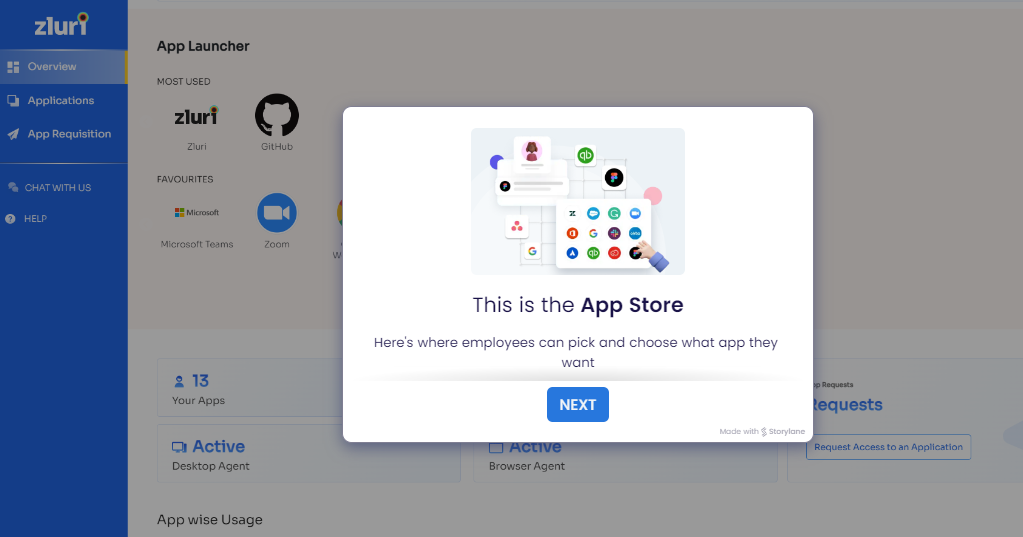Access Management
• 11 min read
Centralized Identity and Access Management: A 101 Guide
9th November, 2023
SHARE ON:
Modern IT environments are diverse, combining on-premises and cloud resources, corporate and BYOD devices, and various operating systems. This diversity, coupled with the rise of hybrid work, can complicate access management for IT teams.
However, achieving a centralized identity and access management strategy is attainable with the right approach and adjustments.
The lack of centralized user and digital identity management makes understanding who has access to resources difficult. It also complicates tracking device usage (whether company-managed or unsecured), troubleshooting issues, and managing system updates.
Additionally, the presence of Shadow IT worsens security risks due to weak identity management. It's important to highlight that 84% of organizations experienced at least one identity-related breach in the past year, showing the widespread problem.
IT teams must strike a delicate balance to mitigate these concerns as effectively as possible. They need centralized control over identities, access, and devices while affording departments and employees the flexibility required to fulfill their tasks.
This blog discusses the critical components, best practices, and the transformative impact that centralized identity and access management can have on fortifying your organization's security posture.
Centralized Identity And Access Management: An Overview
Centralized identity and access management (IAM) is a security framework and strategy designed to manage and control digital identities and access privileges within an organization from a central point of control. This approach simplifies user access management, enhances security, and ensures compliance with various regulations. It is crucial in modern business operations, where data security and access control are paramount.
In short, centralized IAM systems streamline controlling and securing access to an organization's various systems, applications, and resources.
Key Aspects & Components Of Centralized IAM Include:
Centralized identity and access management (IAM) systems are crucial in ensuring the security and the efficiency of an organization's digital resources. Here are the key aspects and components of a centralized IAM system:
Identity Management: This component involves the creation, maintenance, and management of digital identities for users, devices, and applications. It includes capturing and storing user attributes such as names, roles, and access privileges. Furthermore, Identity Management is pivotal in enabling seamless user experiences, optimizing access control, and enhancing overall security with efficient provisioning and deprovisioning of digital identities.
Authentication: Authentication is the process of verifying the identity of users, ensuring that they are who they claim to be. Centralized IAM systems incorporate various authentication methods, such as usernames and passwords, biometrics, smart cards, and multi-factor authentication (MFA). Users are required to provide valid credentials to gain access.
Authorization: Once users are authenticated, the next step is determining what they are authorized to access. Authorization in Centralized IAM is typically based on policies, roles, and permissions. Role-Based Access Control (RBAC) is a common mechanism that defines which resources and actions are accessible to different organizational roles.
User Provisioning and De-Provisioning: Centralized IAM solutions automate the process of creating, modifying, and revoking user accounts. When a new employee joins the organization, their access to various systems can be provisioned automatically, and when they leave, their access can be de-provisioned to ensure security and compliance.
Single Sign-On (SSO): SSO simplifies the user experience by allowing individuals to log in once and gain access to multiple systems and applications without the need to re-enter their credentials. This enhances convenience and reduces the risk associated with password management.
Directory Services: A central directory, often called an identity directory, is a core component of Centralized IAM. It stores user identities and attributes, acting as a single source of truth for user information. Common examples include Microsoft active directory and LDAP (Lightweight Directory Access Protocol) directories.
Access Control Policies: Policies are established to define and enforce access rules. These policies specify who can access what resources and under what conditions. For example, an access control policy might dictate that only HR personnel can access employee payroll data.
Auditing and Logging: Centralized IAM systems maintain detailed logs of user activities and access events. This auditing and logging functionality is crucial for security, compliance, and troubleshooting. It provides a record of who accessed what, when, and why, aiding in incident response and compliance reporting.
Multi-Factor Authentication (MFA): MFA is a vital security feature that requires users to provide multiple forms of identification before granting access. It adds a layer of protection against unauthorized access, as it's more challenging for attackers to compromise.
Effortless Password Management: Centralized IAM systems often include tools and policies for managing passwords, enforcing password complexity, and enabling password resets. This helps reduce the risk of weak or compromised passwords.
Strong Compliance and Reporting: Ensuring that IAM practices align with industry regulations and internal security policies is crucial. Centralized identity and access management tools facilitate compliance by generating reports demonstrating adherence to security standards and tracking security incidents.
Centralized IAM is a critical component of modern cybersecurity and identity management. It streamlines access control, enhances security, simplifies user management, and ensures compliance. By maintaining a central point of control, organizations can efficiently manage access to their systems and data while safeguarding against unauthorized or inappropriate access.
The Importance Of Centralized Identity And Access Management
Here are several compelling reasons why Centralized IAM is not just a choice but a necessity for your organization. It forms the foundation for establishing data security, operational flexibility, and compliance with regulations, promoting a robust and flourishing business environment.
Enhanced Security: Centralized identity and access management ensures that only authorized individuals can access critical resources and data, reducing the risk of data breaches and unauthorized access.
Reduced IT Overhead: Centralized IAM reduces the administrative burden on IT departments, as they can manage user accounts and access permissions more efficiently. It simplifies managing user accounts, permissions, and access privileges, making it easier to maintain and audit who has access to what.
Efficient Troubleshooting: Diagnosing and resolving access-related issues with a centralized system becomes more efficient, minimizing downtime and disruptions.
Compliance and Regulations: Meeting regulatory requirements and industry standards is easier with a centralized IAM system. It simplifies auditing and reporting, making compliance efforts more efficient. It helps your organization comply with industry regulations and data protection laws, reducing legal risks and potential fines.
Improved Productivity: Managing and allocating resources with a centralized system is easier. You can track and allocate permissions and resources with greater precision. Thus, employees can access the resources they need more quickly and easily, leading to increased productivity and a smoother workflow.
Reduced Shadow IT: A centralized approach discourages using unauthorized and unsecured tools, reducing security risks associated with Shadow IT. It can help reduce the risks associated with shadow IT by providing a sanctioned way for employees to access the necessary tools.
Cost Savings: By streamlining identity and access management, your organization can reduce administrative overhead and cut unnecessary expenses.
Adaptability: Centralized management allows for the flexibility needed to adapt to changing business requirements and user roles while maintaining a strong security framework.
Thus, centralized identity and access management is not just a best practice; it's a crucial component of your organization's security and efficiency efforts. Implementing such a system can enhance security, streamline operations, and ensure your organization remains agile and compliant in today’s evolving business environment.
How Centralized Identity And Access Management Functions?
Centralized identity and access management (IAM) is a comprehensive system that simplifies the management of user identities and access privileges within an organization. It operates through a series of steps, beginning with a central hub, where user authentication and access management occur. It includes features like SSO, advanced security measures, efficient user lifecycle management, and compliance support, all contributing to a streamlined and secure user experience.
Here's how it operates:
Step 1: Unified Access Point: Centralized Identity and Access Management (IAM) begins with establishing a centralized hub, serving as the system's core. This hub is where all user identity and access management tasks are coordinated.
Users gain access through a single console, which enables a broad spectrum of services and infrastructure. This eliminates the need to manage multiple accounts and access points, streamlining the user experience.
Step 2: Single Sign-On (SSO): In addition to centralizing access, many centralized IAM systems incorporate Single Sign-On (SSO) functionality. SSO allows users to access the tools and resources they need without the hassle of signing in separately for each application.
This convenience is made possible by establishing trust relationships between the user, your enterprise, and partner sites. As a result, users experience reduced frustration, less friction, and are spared the burden of dealing with multiple passwords.Step 3: Access to Resources with Heightened Security: Users start by authenticating themselves through this central hub. This authentication process verifies their identity, ensuring they are who they claim to be.
Once authenticated, users access various applications, services, and resources through the central hub. This hub acts as a gateway to the organization's digital ecosystem.
Further, it incorporates robust security features, including multi-factor authentication and fine-grained access controls. This ensures a high level of data protection and minimizes security vulnerabilities.Step 4: Efficient User Lifecycle Management: The centralized IAM system streamlines user provisioning and de-provisioning. When a new user joins the organization or an existing user's role changes, adjustments can be made efficiently. This simplifies the onboarding and offboarding processes and ensures users have access at the right time.
Step 5: Simplified Compliance: Centralized IAM facilitates compliance with regulatory requirements and internal security policies. It provides a central point for tracking and auditing user access, simplifying compliance efforts and reporting.
In short, centralized IAM provides a central hub for managing user identities and access, streamlining user experiences, enhancing security, and facilitating efficient user management. It also supports compliance with regulatory requirements and internal security policies, contributing to an organization's overall efficiency and security.
5 Best Practices For Centralized Identity And Access Management
Here are the 5 best practices to facilitate centralized identity and access management, empowering IT teams to strengthen security and streamline operations.
1. Establishing a Centralized Access Directory
A centralized access directory serves as the foundational element of identity and access management. It involves creating a unified repository where user data, roles, and permissions are stored and managed. This directory simplifies user access and ensures consistent access control policies. By centralizing this data, organizations can efficiently manage user identities and their associated permissions, reducing the risk of unauthorized access and data breaches.
Is there a tool available to assist you in this practice?
Zluri provides a centralized platform that empowers IT teams to efficiently oversee user identities, roles, and permissions in one centralized hub. This repository acts as a focal hub for administering access across diverse systems and services. This centralized approach ensures your IT team maintains complete control over the individuals with access to essential systems and data.
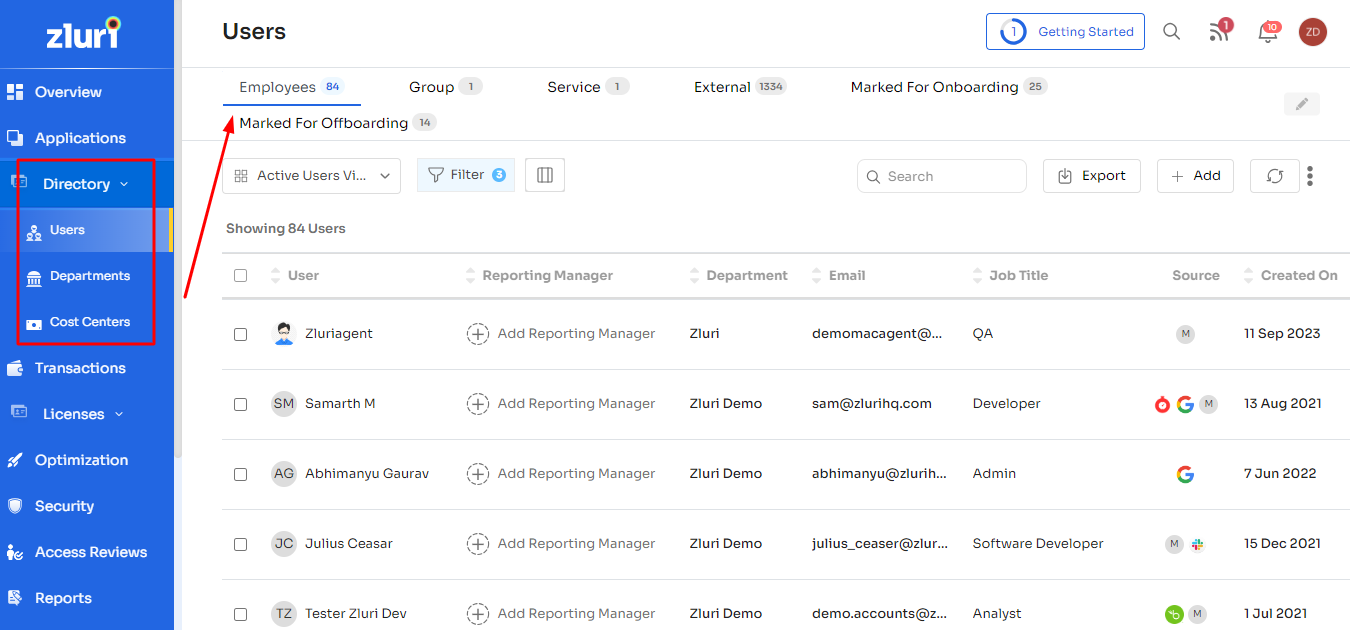
By centralizing user data, Zluri simplifies the intricacies of accessing, altering, or revoking user permissions, leading to a more secure and well-organized access framework.
2. Setting up Centralized Identity Provisioning and Lifecycle Management
Efficient identity provisioning and lifecycle management involve automating and centralizing the processes of granting, modifying, and revoking user access privileges. This practice enhances security and operational efficiency. With centralized control, organizations can promptly respond to employee onboarding, role changes, or departures, reducing the window of vulnerability and the potential for human error in managing access permissions.
How can Zluri assist in this scenario?
Zluri streamlines onboarding by linking user profiles with their digital identities right from the onboarding phase. During the access verification process, your IT team can efficiently cross-reference information through a centralized dashboard, precisely assigning access according to the user's role.
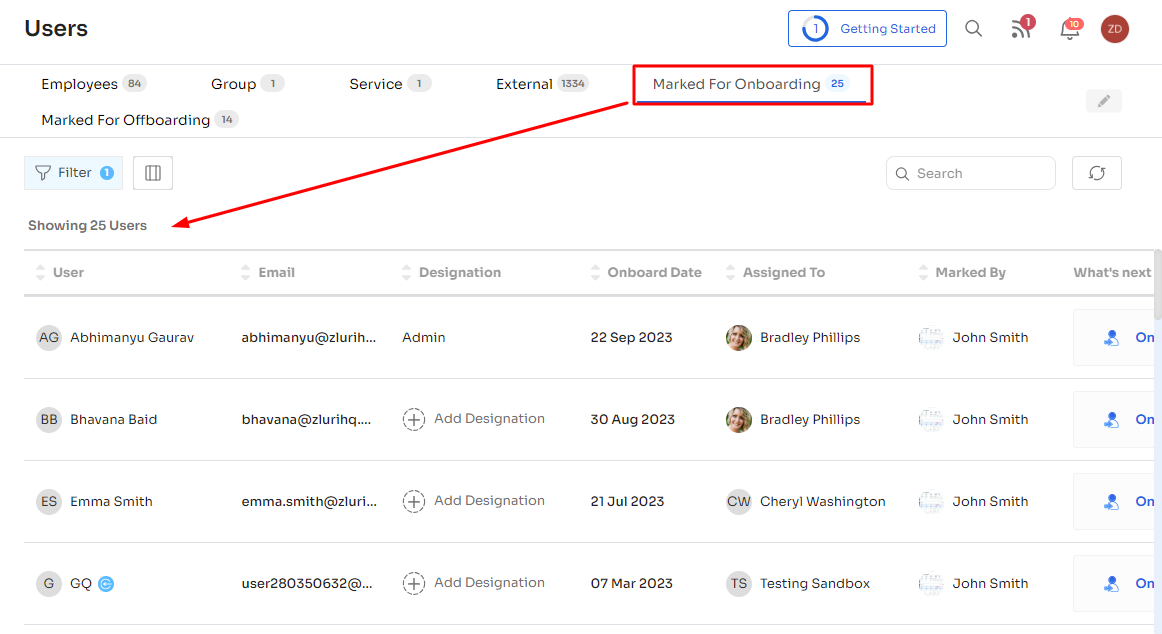
Taking it a step further, Zluri automates the entire provisioning process. With a few clicks, your team can provide new employees access, ensuring they have the appropriate permissions for essential applications. This enhances employee productivity and enables them to commence their work seamlessly from day one.
Beyond identity provisioning, Zluri distinguishes itself in comprehensive user lifecycle management, exhibiting expertise in various stages, including offboarding and mid-lifecycle changes.
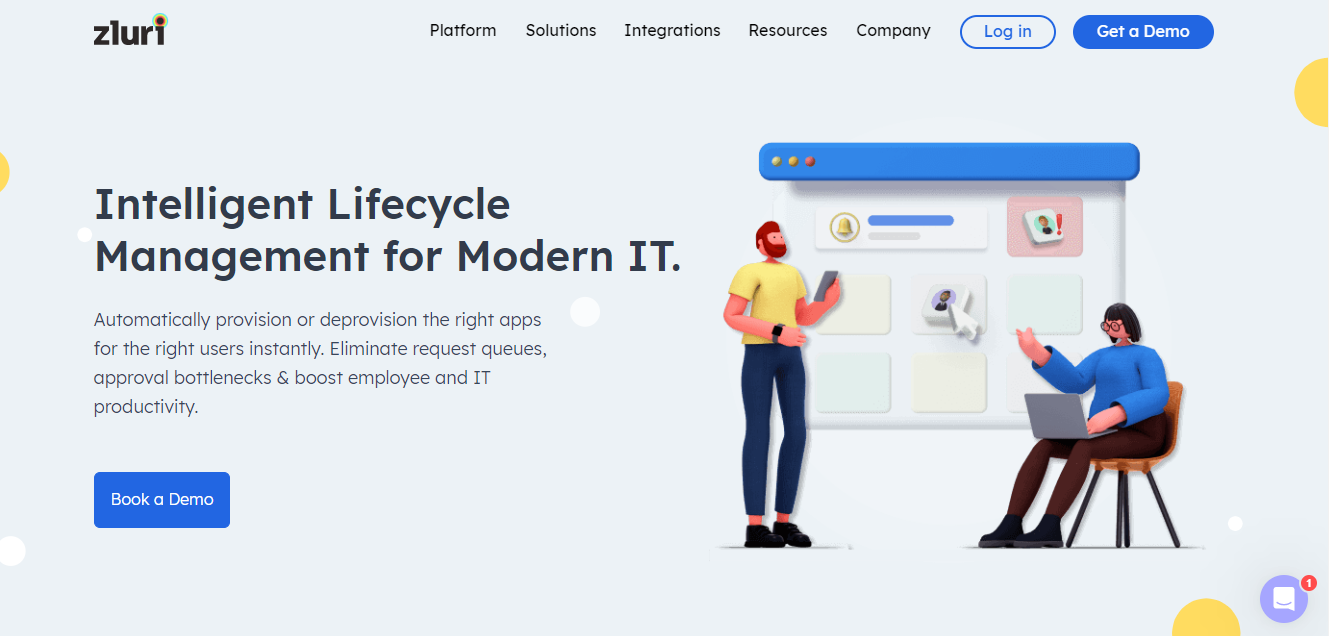
In the deprovisioning phase, Zluri showcases equal proficiency. When an employee departs, the platform facilitates the swift revocation of their access. Subsequently, it transfers the data to another user or creates a backup, ensuring no data loss occurs, even though revoking access is a straightforward process from the admin perspective.
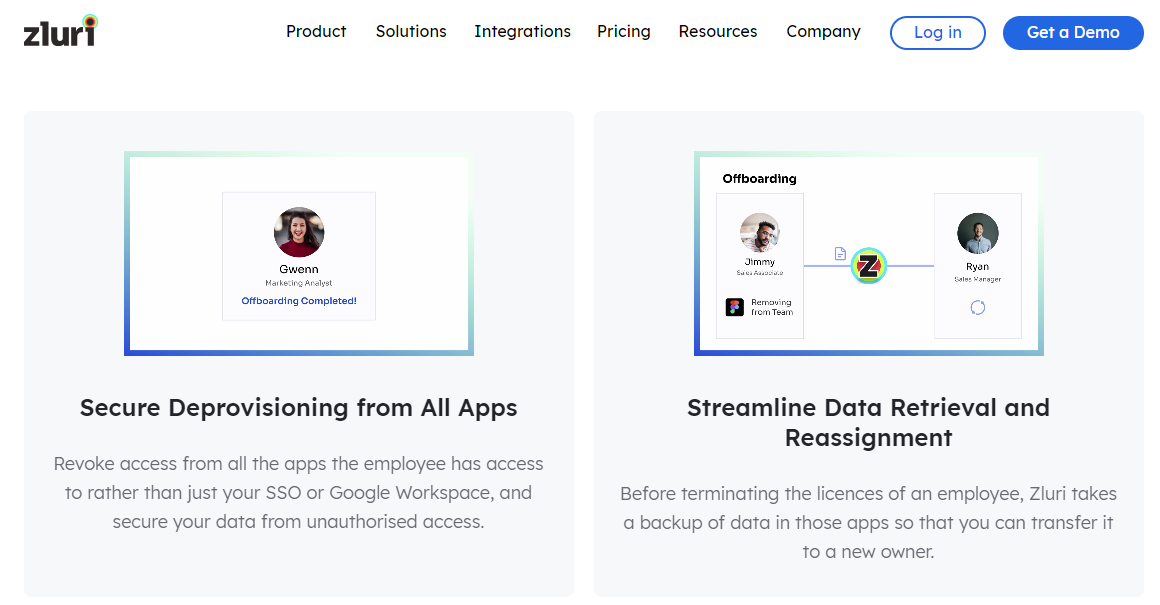
This proactive approach minimizes security risks associated with lingering access rights, safeguards sensitive information, and maintains a secure environment.
Furthermore, Zluri excels in handling mid-lifecycle changes. Whether it involves role adjustments or changes in responsibilities, the platform enables IT teams to modify access permissions as needed.
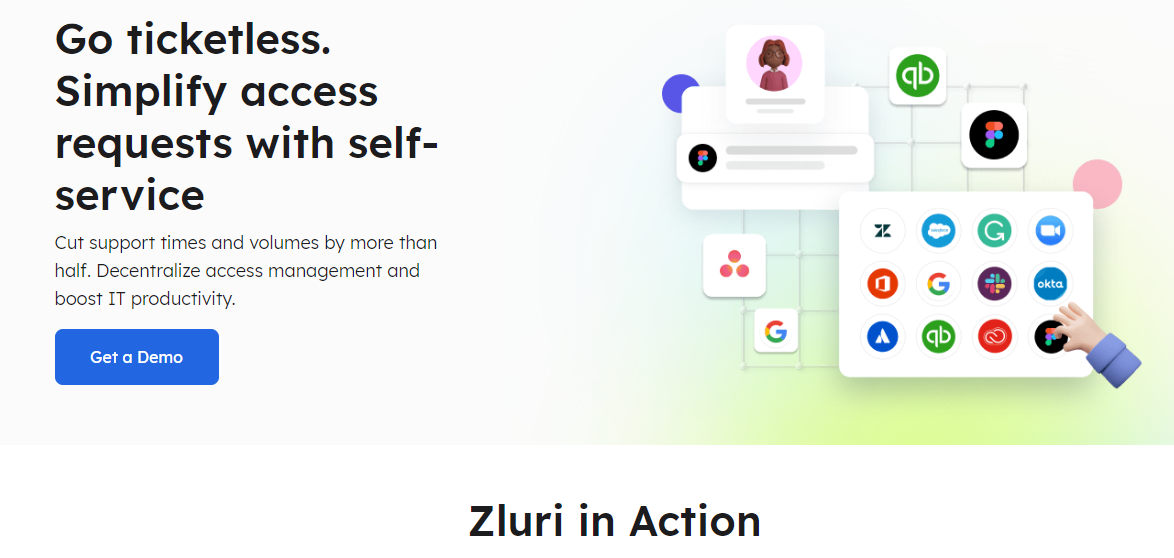
This adaptability ensures that user access accurately aligns with evolving roles, promoting security and operational efficiency throughout the user lifecycle.
3. Enabling Single Sign-On (SSO) for Universal Access to Cloud Services
Implementing single sign-on (SSO) simplifies the user experience by allowing individuals to access various applications and services with a single set of credentials. This approach eliminates the need to remember multiple usernames and passwords, thus reducing password fatigue and the risk of weak passwords.
SSO also enforces robust authentication methods and access policies, enhancing security across cloud services while ensuring a seamless and efficient user login experience.
Zluri integrates with SSO for universal access to cloud services
Zluri's integration with SSOs simplifies the authentication process for users. Users can access multiple applications and services with a single set of credentials, eliminating the need to remember and manage multiple login details.
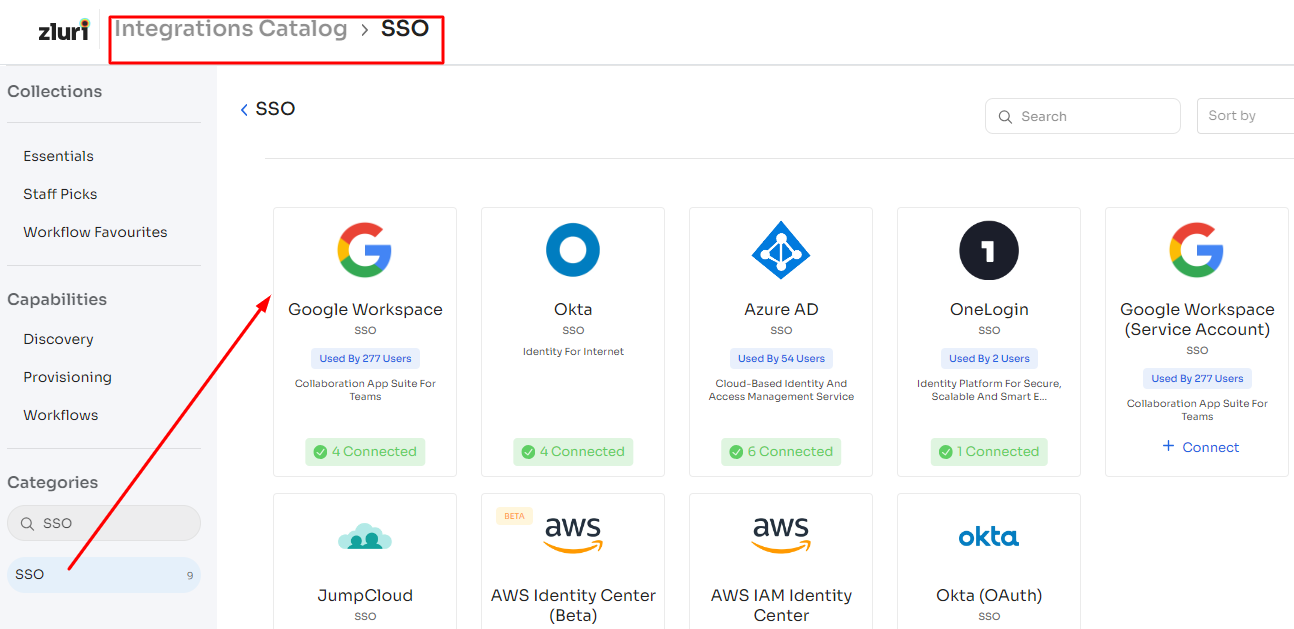
Changes made in the SSO system are reflected in Zluri, and vice versa, maintaining consistency in user access permissions. Additionally, it summarizes critical users and applications, offering insights into employees utilizing risky apps and sending alerts accordingly.
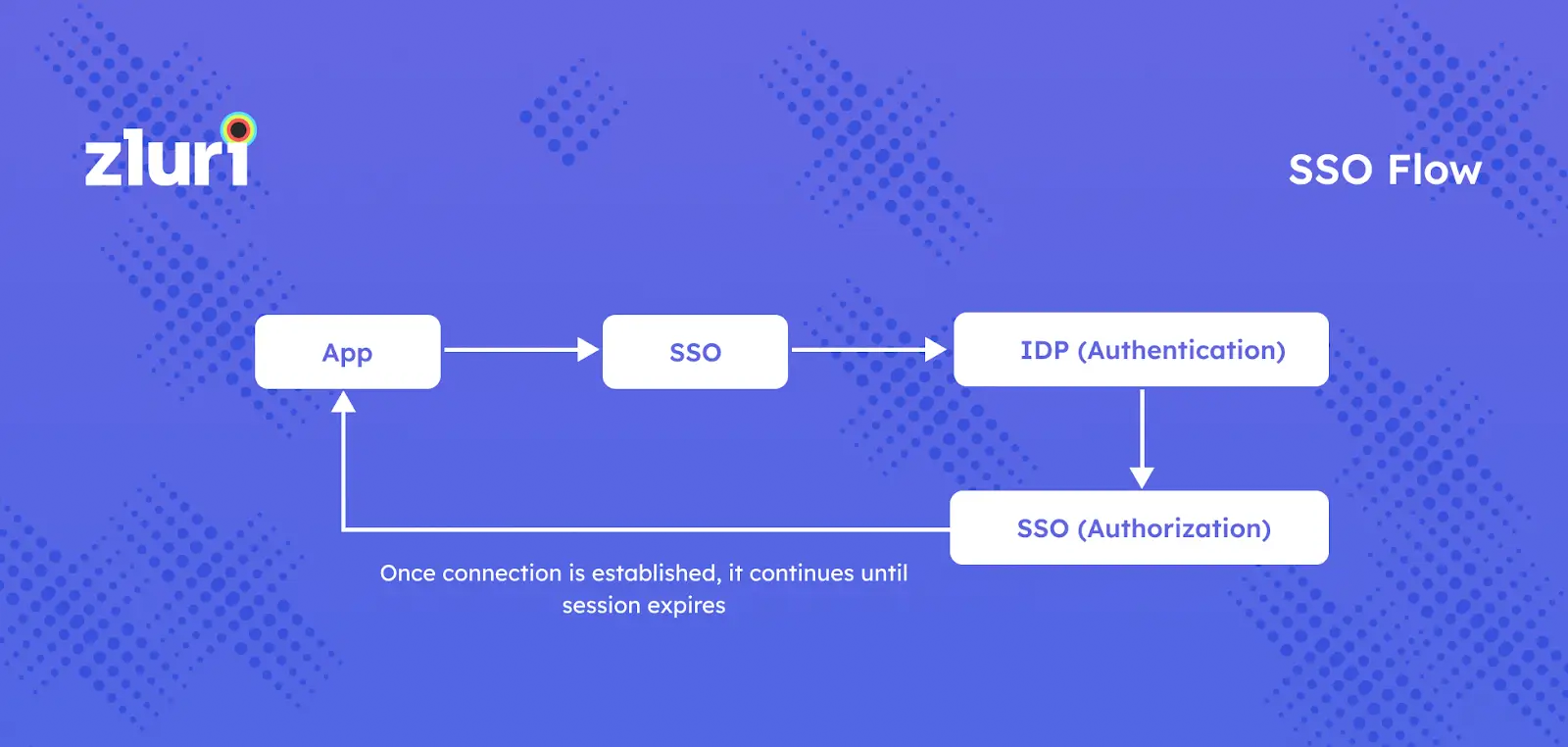
Further, Zluri's integration with SSOs promotes user productivity by providing a seamless and efficient login experience. Users can navigate between different applications without the hassle of repeated logins, contributing to a more streamlined workflow. This enhances user convenience and boosts security by enforcing robust authentication measures.
4. Deploying a Centralized Monitoring System
Centralized monitoring is a proactive security measure providing real-time visibility into user activities and access events. Organizations can quickly identify suspicious or unauthorized login attempts by collecting and analyzing data from various sources.
This practice is essential for incident response, allowing immediate action to mitigate potential security breaches. A centralized monitoring system keeps organizations ahead of emerging cyber threats and compliance requirements.
Is monitoring included in Zluri's features?
Zluri plays a pivotal role in centralized monitoring by comprehensively tracking every access and user permission, along with their associated activities. The platform's robust features enable IT teams to monitor user interactions, ensuring a secure and well-monitored access environment.

The platform offers real-time insights into user access and permissions across various systems, allowing IT admins to promptly identify and respond to suspicious or unauthorized activities. This capability minimizes the potential impact of security threats. Zluri meticulously tracks user activities, providing a granular understanding of who accessed what and when.
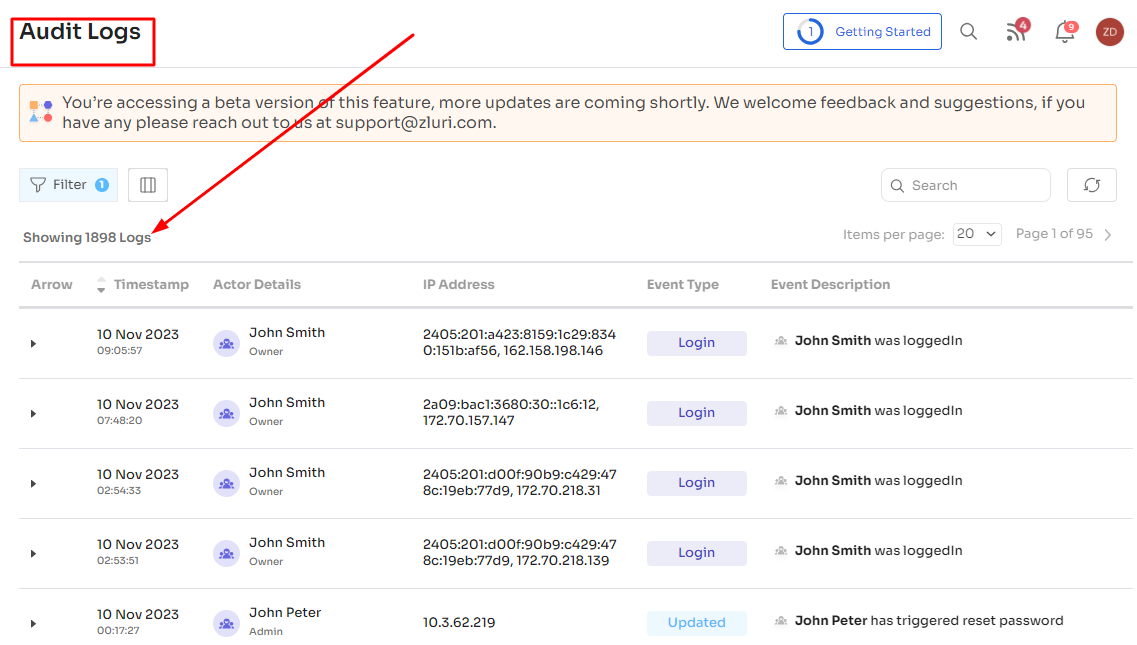
In addition, Zluri's auditing capabilities ensure a comprehensive record of access events and changes in user permissions. This audit trail proves valuable for compliance purposes, internal investigations, and maintaining a transparent and accountable access management system. The seamless flow of monitoring, real-time insights, and detailed tracking within Zluri contribute to a proactive and practical approach to access management in today's dynamic security landscape.
5. Conducting Regular Scans for Ongoing Access Reviews/Certifications
Regular access reviews are a critical component of maintaining a secure access environment. Organizations can assess user access rights and privileges by conducting systematic and recurring scans to ensure they align with business needs. This ongoing practice helps identify and correct discrepancies, reducing the risk of excessive or inappropriate access that malicious actors can exploit.
Access reviews should be integral to an organization's security and compliance strategy, ensuring access permissions align with changing business requirements and security standards.
How does Zluri facilitate this crucial aspect of access management?
Zluri automates the access review process, allowing organizations to conduct regular reviews of user access rights without requiring extensive manual effort. This automation ensures access reviews are conducted consistently and promptly, reducing the risk of overlooking critical permissions.

It provides a granular analysis of user access, allowing administrators to review and certify permissions at a detailed level. This ensures that access rights align precisely with the principle of least privilege, reducing the risk of over-provisioned accounts.

Further, Zluri automates notification and escalation processes during access reviews. This ensures that responsible parties are promptly notified of pending certifications and that escalation mechanisms are in place to address any delays or issues that may arise during the review process.
By implementing these best practices for centralized identity and access management, IT teams can enhance security, reduce operational complexity, and ensure efficient access control across their systems and services. This approach is crucial in today's security-conscious landscape to safeguard sensitive data and protect against emerging threats.
Enhance Your Access Management with Zluri's Centralized Solution
Your organization's data security and operational efficiency depend on granting the right access levels to the right users at the right time across various applications. That's where Zluri's access management solution comes into play. It has a range of essential features crafted to simplify and strengthen your access management procedures.

Zluri provides a centralized access management platform for overseeing access rights throughout your organization. IT teams can effortlessly assign, adjust, or revoke access to applications and organizational resources using a singular, user-friendly dashboard. This centralized method guarantees your IT team maintains absolute control over individuals accessing vital systems and data.
Key features of Zluri
Precise Access Management: Customize access levels with precision, ensuring that individuals have the right permissions across applications and systems. This precision in access management guarantees that data remains safeguarded, and organizational workflows operate with utmost efficiency.
Role-Based Access Control (RBAC): Zluri supports role-based access control (RBAC), enabling the creation of predefined roles with specific permissions. This ensures users only access resources essential for their roles, bolstering security and minimizing the risk of data breaches.
Robust Reporting Capability: Zluri provides extensive reporting capabilities, allowing you to monitor user activity, track changes in access permissions, and generate detailed reports to ensure compliance with regulations and internal policies.
Seamless Integration: Zluri effortlessly integrates with various SaaS applications, on-premises applications, and identity providers. This compatibility with your existing tech stack streamlines platform management, ensuring a seamless user experience.
Empowering Self-Service: Enhance employee empowerment with Zluri's self-service solution, an enterprise app store. Employees can request access to necessary apps and manage their accounts independently, reducing the burden on your IT team and boosting user satisfaction.
![app catalog & access request]()
Efficient Automated Workflows: Zluri simplifies intricate IT processes by automating various workflows. Whether it's provisioning accounts, updating permissions, or triggering alerts for suspicious activities, Zluri's automation capabilities save valuable time and effort.
Further, it extends to tasks like seamless user onboarding, scheduled access reviews, and automated compliance checks. From simplifying license management to orchestrating data backups, Zluri's diverse workflows enhance efficiency across your entire IT landscape.
To learn more about Zluri’s access management solution, schedule a demo today!
Related Blogs
See More
Subscribe to our Newsletter
Get updates in your inbox

